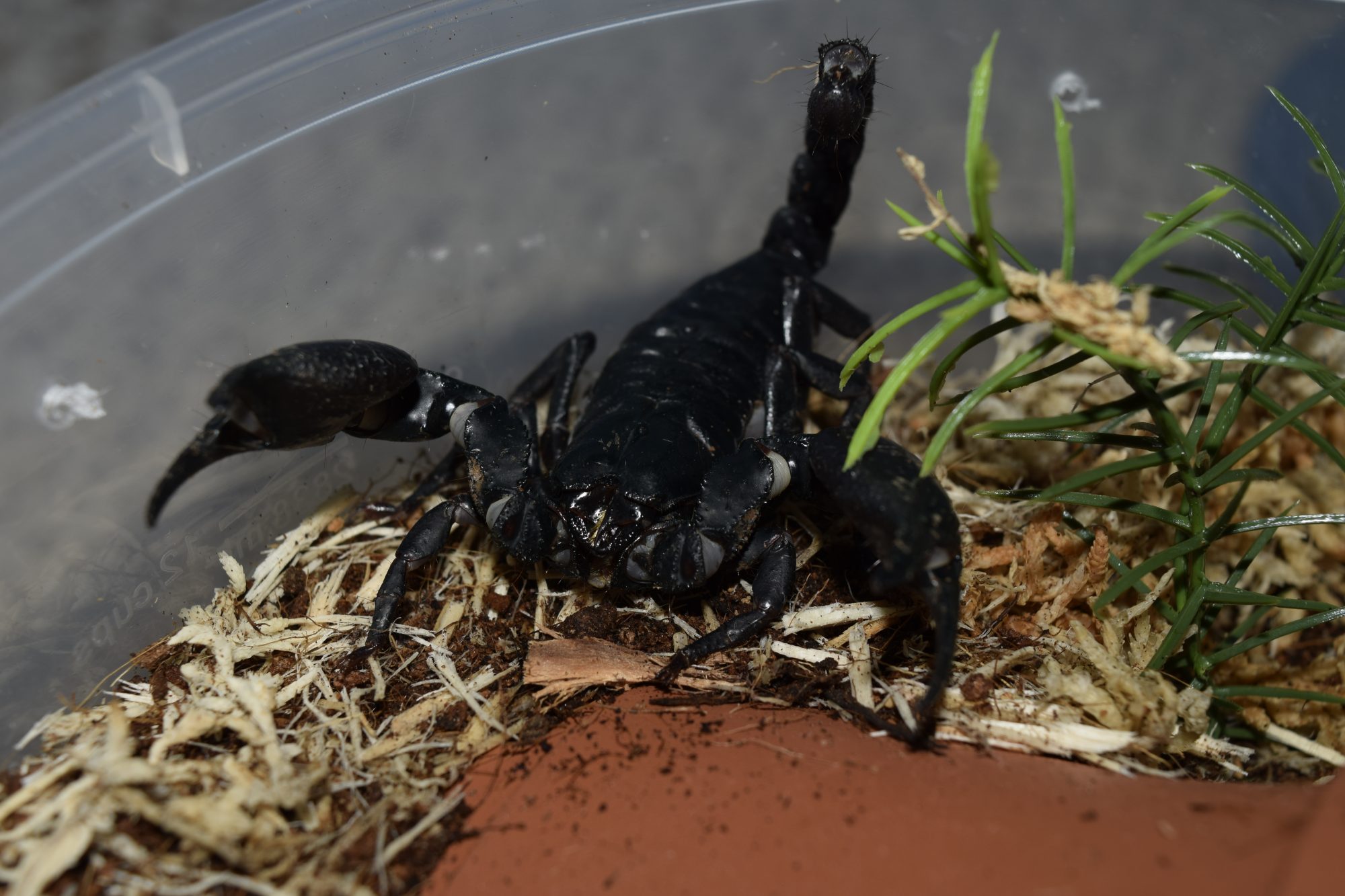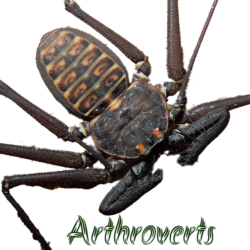Whoa, a post on the first of the month??? And there was a post in the month before?? Consider yourselves lucky…
This time I will be sharing some info and tips on how to protect your collection from earthquakes, and to a smaller extent wildfires and flash floods. This information was garnered from a brain-storming meeting at one of the Invertebrate Club of Southern California meetings. Since we are in an area that is expecting a “Big One” (we are actually very overdue for a large earthquake), we figured this would be a pertinent topic to discuss. However, since Southern California is not the only place that has earthquakes (I’m thinking of our fellow Indonesian enthusiasts), this info should be of use to all those who live in earthquake zones.
So how do we protect our collections? The first step is making sure your racks, bookcases, shelves, or whatever it is that your enclosures are on, do not fall down. To do this, you must have some form of strap that secures to the wall stud. I use these ones (https://amzn.to/2Zewvgx), although I’m sure similar products work just as well. Another thing that can be done is to place heavy enclosures, such as large glass Exo Terra or Zoo Med cages, down on the lower shelves of a rack. I’m sure we can all imagine what will happen if one of your racks falls down, especially if you have more potent/aggressive invertebrates.
With this done, you then need to make sure your containers do not slide off; this can be achieved by either placing enclosures on top of non-slip rack liners (https://amzn.to/30joqsf), or by using the metal racks with bars that also help prevent sliding. In the event that an enclosure does get flung off, it is very important to make sure you use containers with lids that close tight, otherwise you may end up with a Leiurus quinquestriatus or a Cyriopagopus lividum prowling around. Double containers may also work if you have large numbers of small slings in deli cups with lids that don’t always snap perfectly tight (taping the lids may also work). If you have hard plastic or glass cages (Critter Keepers, Sazon containers, glass terraria), it would best to place them lower down on the racks so that if they do fall off, there is a less chance of the plastic or glass cracking or shattering. It is naturally of utmost importance that you don’t have extra glass on the floor after a large earthquake, or venomous invertebrates running around; while they (the invertebrates) are more likely to run and hide, there is always a chance one may decide to stand its ground and fight. That is pretty much all you can do to prepare for an earthquake.
However, you must also make sure that after an earthquake hits, you have a plan in place to keep your collection alive during the recovery process. After the earthquake, it is possible, if not likely, that you won’t have running water, electricity, gas, etc. Therefore, it is important to make sure that you have the necessary means to keep your collection cool/warm, depending on the season. Most shelters will not accept pets outside of dogs, cats, horses, etc., so you cannot rely on them as places to where you can take your animals.
If it is summer, you can keep your collection cool with the use of chemical cool packs, moving enclosures to a cooler room or in a lower area (as heat rises), or if you have regular winds, opening a window may be all that is needed to keep your collection cool. If it is winter, chemical heat packs and moving your enclosures to a warmer area are your best bet.
The problem of not having running water can be remedied by using the number of water filtration units that are available. Bottled water, and water from a pool if you have one can also be used if necessary. You should irregardless have an emergency store of water to supply you, your family, and all your animals in case of situations like this already. Many invertebrates can survive short periods in dry conditions, but if you have moisture dependent animals, it is important to have an emergency store of water to supply them for at least a week as well. Most invertebrates should be able to survive several weeks without food, but if you are worried about it, you can start a small colony of crickets, roaches, or mealworms to supply you in case of emergencies.
Your collection is an investment, especially if you have a large collection and/or expensive animals. While the local invertebrate market will likely be down for a long while after a big earthquake, you may be able to sell some specimens off to those outside of the affected area to help pay with repairs/necessities. It’s not likely, but it is still something that should be kept in mind.
I know that none of us would want to lose our collections, especially if it survived a large quake only to die in the chaos afterwards. Keep that investment alive, and you never know how it may pay itself back in the future.
Finally, other natural disasters; flash floods you usually don’t have to worry about, but if you think you may be in an area prone to flooding, move your invertebrates to a higher area in the house/room. Otherwise, there is not much that can be done in case of a flash flood.
For wildfires, you can only hope and pray that the fire does not take your house, because if it does, there is nothing you can do to save your collection. Most of the time you will have a small time frame to gather up valuables before having to evacuate, but I cannot stress this enough: make sure you and your family are safe first. If you have time, grab any irreplaceable items and vertebrate pets (as unlike most invertebrates, they will feel pain and suffer if left behind), such as picture albums, important documents, cash, the family dog, etc. Then if you have enough time, grab the invertebrates that you care about the most. It would be helpful to make a list of the specimens you wish to grab first beforehand, so that you are not stressing about which creature to take in the confusion of an evacuation. Naturally, if you have enough space and time, you can try and bring everything, but this may not always be an option.
And that is pretty much it! While it’s not suggested for you yo become an invertebrate doomsday prepper, with an underground bunker all ready to defend your valuable T. seladonia from anarchists, looters, and rouge USFWS agents, we do suggest that you at least take some precautions and have a plan in place for when an earthquake or other natural disaster comes. Just remember; you and your family’s and friend’s safety should take precedence over all your animals. There will always be another such-and-such invertebrate to replace one you lose, but human lives are irreplaceable.
Thanks,
Arthroverts

